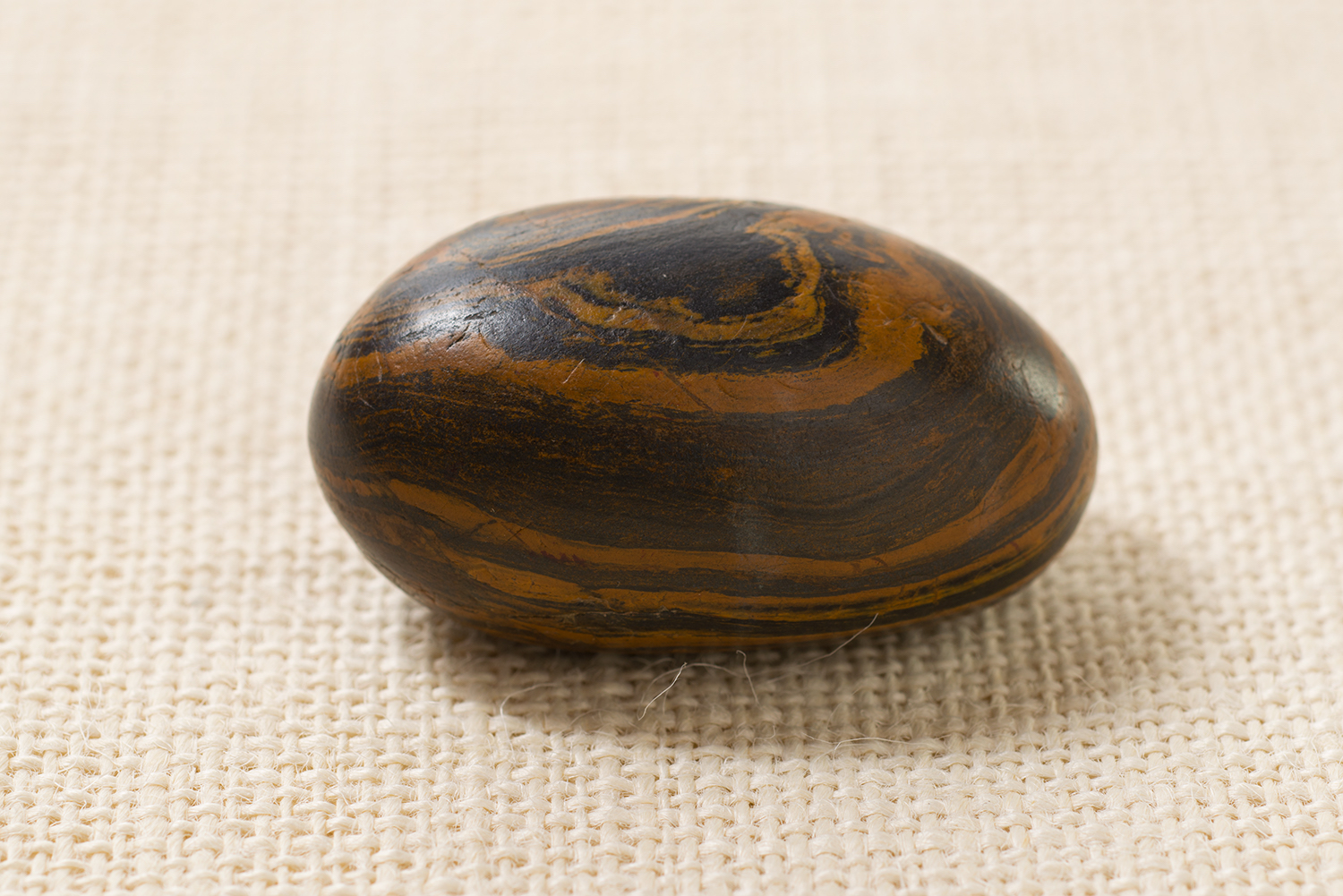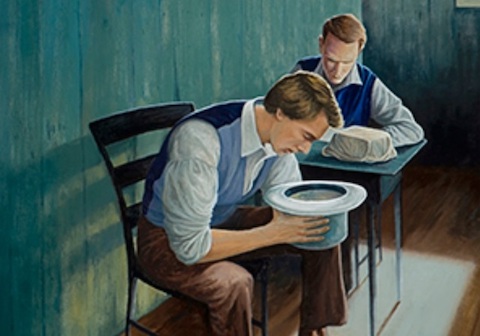Seer Stones
A seer stone is a special stone used for seeing visions and aiding translation.[1] Joseph Smith used two types of seer stones in his work of translation and in receiving revelation. He gradually became accustomed to the process of revelation and by 1830 didn’t need to use seer stones.[2] [3] [4]
Contents
Urim and Thummim, or Interpreters
Among the items secured in the stone box on the hillside where Joseph retrieved the gold plates were seer stones, called by the angel Moroni “Urim and Thummim.” “There were two stones in silver bows—and these stones, fastened to a breastplate, constituted what is called the Urim and Thummim—deposited with the plates; and the possession and use of these stones were what constituted ‘seers’ in ancient or former times; and that God had prepared them for the purpose of translating the book.” (Joseph Smith—History 1:35).
The Book of Mormon text mentions the “interpreters” two times. The interpreters “were prepared from the beginning, and were handed down from generation to generation, for the purpose of interpreting languages; And they have been kept and preserved by the hand of the Lord” (Mosiah 28:14–15, 20). The brother of Jared was told by the Lord that the language he was to write had been confounded by the Lord, “wherefore I will cause in my own due time that these stones shall magnify to the eyes of men these things which ye shall write. And the Lord said unto him: Write these things and seal them up; and I will show them in mine own due time unto the children of men” (Ether 3:24, 27).
Joseph Smith and “close acquaintances left accounts of these stones, describing them as white or clear in appearance, set in silver bows or rims like modern eyeglasses or spectacles, and connected to a large breastplate. As described, this seeric device would have been bulky. Joseph Smith’s mother said that he detached the stones from the breastplate for convenience while using them.”[5]
See also Urim and Thummim.
Joseph Smith’s Seer Stone
“In Joseph Smith’s day, some individuals claimed that they had a gift to “see,” or receive divine or supernatural messages, through seer stones. These beliefs came from the Bible and from European cultural traditions brought to early America by immigrants. Joseph Smith and his family accepted these beliefs, and Joseph occasionally used stones he located in the ground to help neighbors find missing objects or search for buried treasure.”[6] By 1826, Joseph Smith had at least two seer stones, and according to Brigham Young he eventually had five seer stones.[7]
“During the translation of the Book of Mormon, Joseph Smith apparently used both of these instruments—the interpreters and his seer stone—interchangeably. They worked in much the same way, and the early Saints sometimes used the term ‘Urim and Thummim’ to refer to the seer stone as well as the interpreters.”[8]
President Russell M. Nelson explained Joseph’s use of the seer stone when he addressed mission presidents training at the MTC in 1992:
- The details of this miraculous method of translation are still not fully known. Yet we do have a few precious insights. David Whitmer wrote:
- “Joseph Smith would put the seer stone into a hat, and put his face in the hat, drawing it closely around his face to exclude the light; and in the darkness the spiritual light would shine. A piece of something resembling parchment would appear, and on that appeared the writing. One character at a time would appear, and under it was the interpretation in English. Brother Joseph would read off the English to Oliver Cowdery, who was his principal scribe, and when it was written down and repeated to Brother Joseph to see if it was correct, then it would disappear, and another character with the interpretation would appear. Thus the Book of Mormon was translated by the gift and power of God, and not by any power of man.” (David Whitmer, An Address to All Believers in Christ, Richmond, Mo.: n.p., 1887, p. 12.) (Elder Russell M. Nelson, “A Treasured Testament”, Ensign, July 1993, 61)
A Seer
On April 6, 1830, the day The Church of Jesus Christ of Latter-day Saints was organized, Joseph Smith received the revelation recorded in Doctrine and Covenants section 21, where he was called to be a seer. “Behold, there shall be a record kept among you; and in it thou shalt be called a seer, a translator, a prophet, an apostle of Jesus Christ, an elder of the church through the will of God the Father, and the grace of your Lord Jesus Christ.”[9]
A seer is one who sees. “‘Seeing’ and ‘seers’ were part of the American and family culture in which Joseph Smith grew up. Steeped in the language of the Bible and a mixture of Anglo-European cultures brought over by immigrants to North America, some people in the early 19th century believed it was possible for gifted individuals to “see,” or receive spiritual manifestations, through material objects such as seer stones. The young Joseph Smith accepted such familiar folk ways of his day, including the idea of using seer stones to view lost or hidden objects. Since the biblical narrative showed God using physical objects to focus people’s faith or communicate spiritually in ancient times, Joseph and others assumed the same for their day.”[10]

